Fixed on Switch: No Man's Sky's custom FSR 2 support dramatically improves the game
Alan Wake Remastered, The Outer Worlds and GTA Trilogy Definitive Editions also revisited.
The Nintendo Switch isn't the easiest console to work with. Packing a low-power mobile processor with technology dating back to 2015, it lacks the technological grunt to keep pace with last-gen console systems - and this can result in some lacklustre third-party ports. In putting together this piece, we decided to circle back and examine some of the most disappointing Switch conversions - and we were happy to discover a range of improvements. In the case of Hello Games' No Man's Sky, we even see the developer deploy the first example we've seen of FSR 2 upscaling on the Nintendo hybrid - and the results are excellent.
NMS was always going to be a tough Switch port. The open-universe game is understandably taxing on Switch hardware, resulting in poor frame-rates, plenty of pop-in and somewhat dire image quality when it launched last year. The constant flicker and muddy image was probably the worst of the game's issues - I described it as being "one of the worst offenders on Switch" - with a 648p and 504p resolution split in docked and portable play respectively, slathered in ineffective TAA. However, the introduction of dynamic resolution scaling working in concert with a customised version of FSR 2 optimised for Switch is transformative.
With the recent patches, No Man's Sky is now one of the cleanest, most visually stable games on Nintendo's hardware. All the jagged, unstable lines that used to constantly flicker and create artifacting, even in stills, have been calmed. Texture detail is still a bit on the blurry side at times, but appears quite clean. If you zoom in closely, the actual sharpness of the image is about the same as before, but fine details are much more legible, even at far distances. In docked mode, we're looking at a resolution range of roughly 468p to 648p or so, with an FSR 2 output resolution of something around 648p, judging from the final image, while portable mode seems to be rendering at roughly a dynamic 504p with an output around the same resolution. Developer Hello Games isn't aiming for a super high output here, which is perhaps a consequence of the frame-time costs that FSR 2 imposes, but the studio achieves a very clean, albeit soft, final resolve.
We asked Hello Games what its approach was in bringing AMD's temporal supersampling upscaler to Switch and the developer supplied a detail-rich reply:
"When running FSR 2 (in its reference implementation) on a lower-spec system like Switch, bandwidth is by far the main bottleneck. This is mainly due to the considerable number of samples taken in the final temporal upsampling pass. For this reason, most of our efforts were put into replacing some of the hefty sampling filters used by FSR 2 with custom ones that are more lightweight, but still able to provide a high level of quality. This is by far the single most important change we made in terms of performance.
"Furthermore, FSR2 is not implemented in our engine as an external library, rather it's seamlessly integrated into our pipeline. This allowed us to merge some FSR2 passes with our own and amortise their cost in the process. It also enabled us to port some passes from compute to fragment. Compute is a bit limited on Switch (not unusual for an older GPU), so the move gave us a decent performance gain, too. These changes made the bulk of the difference.
"The final few weeks were spent trying to simplify some of the computations to reduce ALU cost and increase occupancy (as by this point bandwidth wasn't the main bottleneck anymore). A lot of time was also spent fine-tuning various heuristics to balance sharpness, stability and ghosting. With our 4.40 update, DRS is also now enabled on Switch. Thanks to DRS, we can maintain a stable GPU load even in more taxing environments, and FSR2 does a really good job at hiding momentary resolution changes. This is crucial, as in No Man's Sky, the performance makeup of a scene can change drastically from planet to planet. So this is it, a short high-level overview of how we ported FSR2 to Switch. There was definitely a lot of head-scratching, and at times we weren't sure it would actually work out, but it was also a great joy and really a lot of fun!"
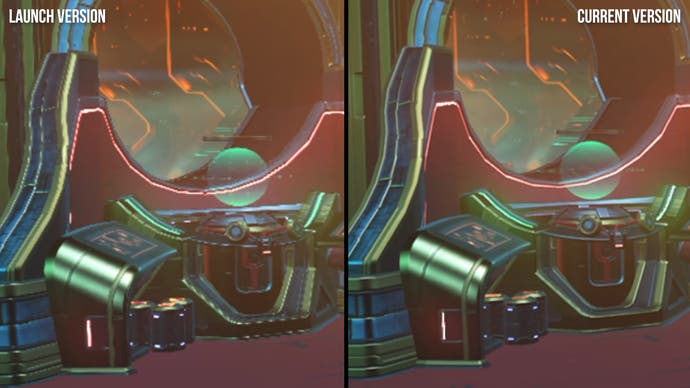

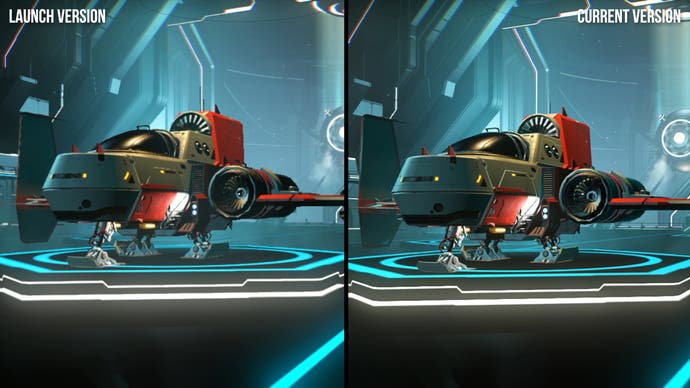
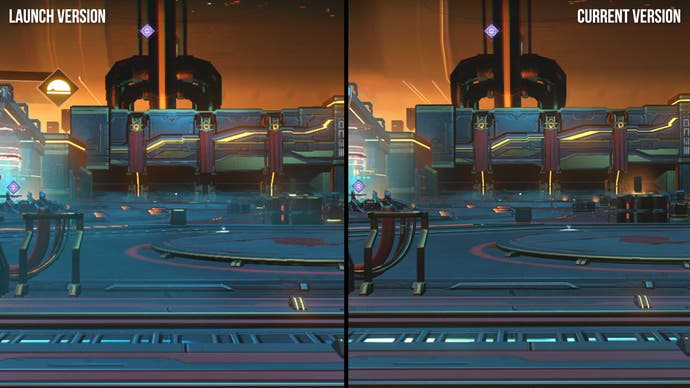
In actual fact, Hello Games has rolled out FSR 2 upscaling support to all platforms, even the last generation consoles where the headroom to support it is limited. In each case, settings were optimised to the specific platform, but we can't help but wonder whether Hello's Switch implementation could find life elsewhere, perhaps for improved performance on PC integrated graphics.
Still, No Man's Sky on Switch is a game transformed, but not every limitation of the original port could be addressed. Performance and pop-in seem similar to the launch release and the game does struggle a little during more demanding moments, such as traversing planet surfaces at speed. It's possible that the game is a little bit more stable relative to that initial version, but the same key issues are still here. Still, the most glaring problem facing the initial Switch iteration of No Man's Sky has been comprehensively addressed, and the game simply works much better as a result.
We also took a look at other Switch ports that fared badly at launch - and have some good news to share. The Outer Worlds was in a bit of state when it launched on Switch in 2020, with massive texture detail and pop-in issues along with brutal reductions in post-process quality. Even then, the target 30fps was thoroughly elusive. These days, the two key post-processing effects absent from the original release have made a return. Ambient occlusion adds a huge amount of lighting detail to the environment, filling out crevices rather nicely. The original game's lighting looks incomplete without decent AO coverage, and the Switch now comes a lot closer to the other console editions of Outer Worlds. Likewise, depth of field is now present for character close-ups, enhancing dialogue sequences with cinematic flair.
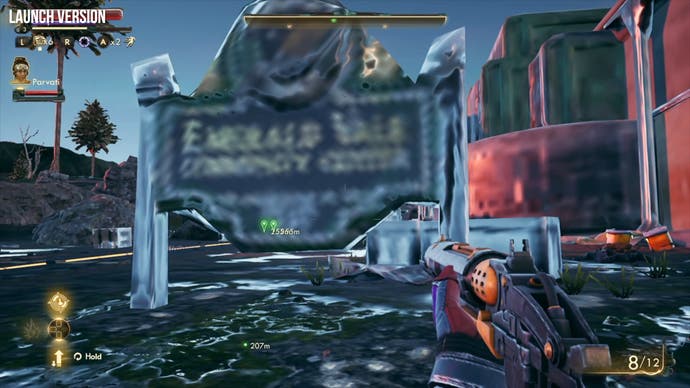

Most of the textures are still obviously a bit low-res, but certain textures do seem to have been upgraded from the original release and streaming problems are resolved. I suspect the original game simply wasn't loading in the highest LODs here for some reason, and it's great that the issue has been fixed. Still, image quality is still soft and indistinct, with resolutions on the lower end of things, and lacking a good form of upsampling to produce a clearer image. Pop-in on models is still a substantial issue, and the game doesn't have especially elegant LOD management in general. The Outer Worlds doesn't look amazing on Switch but it is improved - as is performance. It's still unstable, but nowhere near as bad as it was.
I also looked at the GTA Trilogy Definitive Editions. These UE4-powered remasters are somewhat controversial and disappointed upon their release in 2021. The problematic art and lighting changes provoked the most ire but the Switch ports saw a number of settings reductions in particular that hurt their quality. Post-processing effects like ambient occlusion, motion blur, and screen-space reflections were excised, cloud rendering was simplified, and resolutions were cut back. Performance was also very shaky, suffering from frame-pacing issues as well as frame-rates that often dipped into the low to mid 20s.
On the visual front, not much has changed. The games still suffer from cut-back post-processing and other visual concessions. Some changes from patch 1.04 on the other consoles are also present here, like improved signage and fixed rain sorting, but the graphical differences are still very much present. However, there's improvement on the performance side. The hard dips that afflicted these titles before are all but absent now, with a pretty decent lock on 30fps. They can dip more substantially in extreme scenarios, but most gameplay runs at 30fps without issue - though inconsistent frame-pacing remains a problem, making the game look as it's running worse than it actually is.

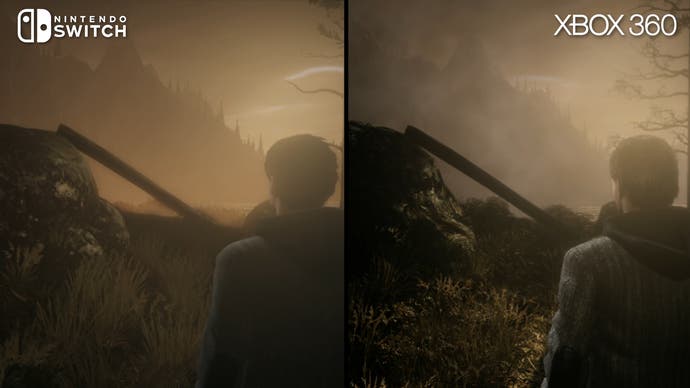
I also wanted to revisit Alan Wake Remastered, which launched with many issues, the game often slipping to 20fps or so during more intense sequences. The updated release runs just fine at 30fps, and manages to operate without frame-pacing problems. Over a few hours of play I did note a few times when the frame-rate did drop, but in general play the game runs without issue. It's a solid turnaround from the initial version, and it does prove satisfying to play and control.
Unfortunately, this port of the game still suffers from a range of issues that render it hard to recommend. The key insight here is that the game is based on 2021's Alan Wake Remastered, not 2010's Alan Wake, and the various effects and textures from that version don't scale well to the Switch. Image quality is soft and blurry, for one, with a combination of low internal resolutions - I counted results around 360p in portable mode and 576p docked - and TAA. Ambient occlusion has also been stripped out, shadows are missing, textures are lower resolution, and water reflections are totally absent. The game simply looks a lot worse on the Switch, which I suppose is to be expected given the eighth-gen pedigree of the remaster, though it's still a big disappointment.
Image quality is significantly better on the Xbox 360 original, with the 540p/4x MSAA combo faring much better than the TAA-infused blurriness of the remaster. Textures appear crisper, ambient occlusion is back, and the reflections also appear just fine here. These seem to be using a planar reflection map, and the results look pretty good, but they're inexplicably absent from Switch.
I'm not a huge fan of the general visual changes made in the remaster to begin with. Alan Wake was a dark, contrasty game with heavy vignetting and thick post-processing. The remaster seems restrained in comparison, dialing up brightness in shadowed regions, cutting back on the vignetting, reducing motion blur and depth of field, and tweaking lighting in many areas. There are plenty of material changes too, changes made alongside a revamp of the game's 2D art, some of which don't really suit the original.
With careful attention and enough time and development resources, the Switch can still punch well above its weight in demanding cross-platform software. Hopefully, upcoming releases like Borderlands 3 and Batman: Arkham Trilogy - which includes the visually demanding Batman: Arkham Knight - will serve as some of the better ports on the platform. And for games that didn't quite hit all the right notes at launch, a decent patching campaign can indeed fix some of their problems.
No Man's Sky is definitely the most impressive upgrade I saw in my tests and it's great to see Hello Games' continued level of support for the game extend to the Switch version, which must have been an onerous, challenging port to begin with. And it's been both fun and heartening to see genuine improvements in titles that unimpressed us at launch. Whether you're a gamer or a developer, do get in touch to let us know whether any other games we've looked at - on any platform - have been significantly improved. We'd love to take a look.
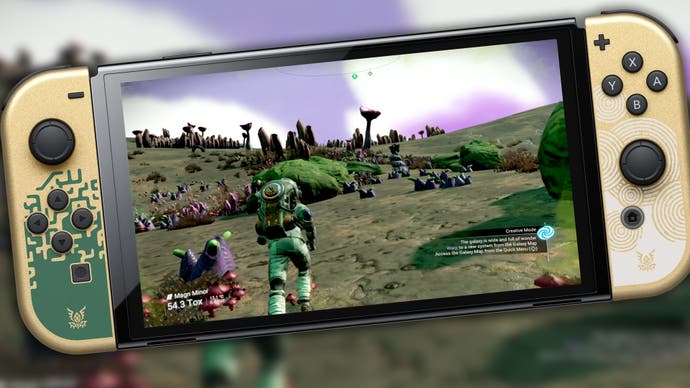



.jpg?width=291&height=164&fit=crop&quality=80&format=jpg&auto=webp)

_Rwmp6uD.jpg?width=291&height=164&fit=crop&quality=80&format=jpg&auto=webp)



.png?width=291&height=164&fit=crop&quality=80&format=jpg&auto=webp)